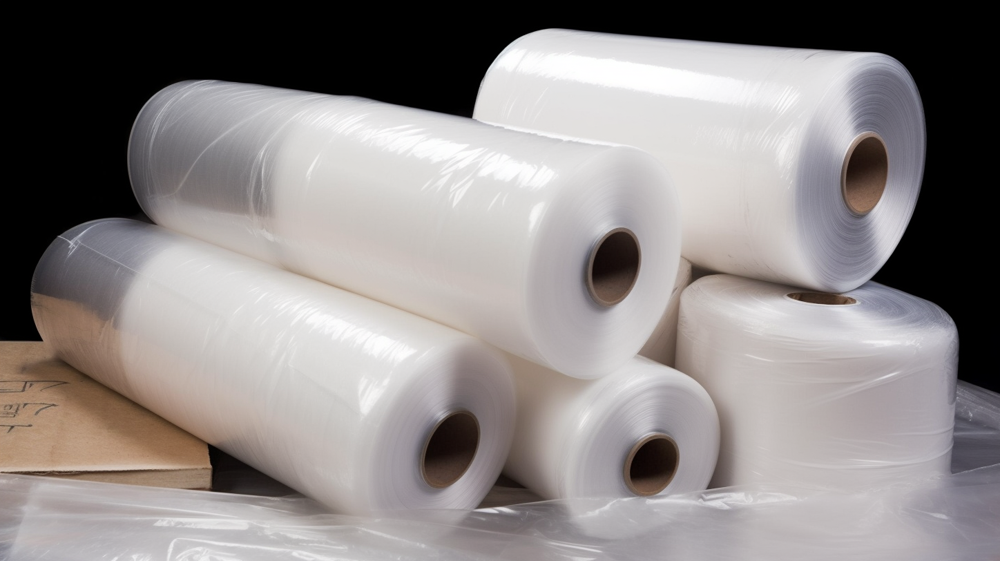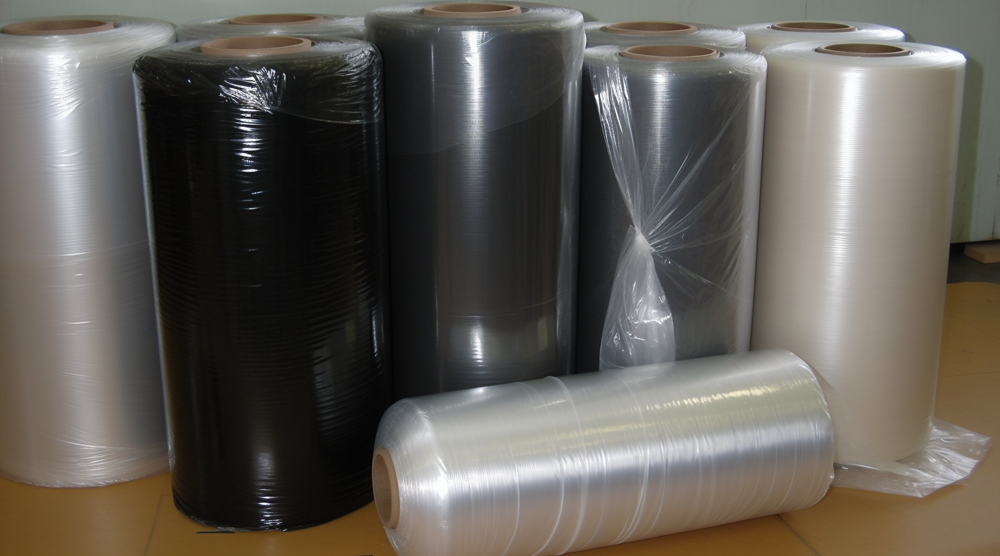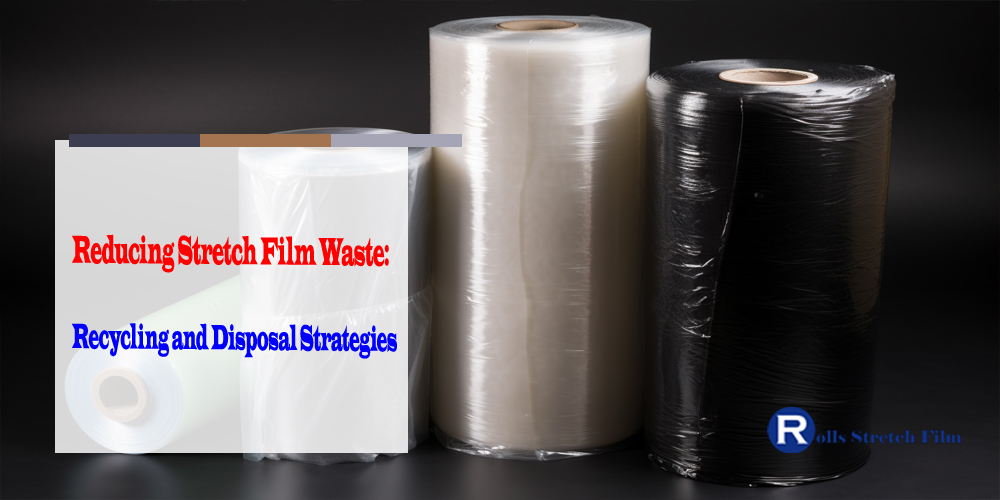Stretch film is commonly used in the packaging industry for its durability and flexibility. However, its improper disposal can result in environmental harm. The good news is that there are various strategies to reduce stretch film waste and promote sustainability.
There are recycling methods and disposal methods to reduce stretch film waste. Mechanical recycling involves collection and sorting, grinding, washing, pelletizing, and extruding while chemical recycling included pyrolysis and gasification. Disposal methods are possible through landfills, incineration, and biodegradation.
From reducing stretch film usage to implementing recycling and disposal strategies, this article explores sustainable solutions to tackle waste.

Definition of stretch film
Stretch film is a flexible plastic film that is commonly used in the packaging industry to wrap and secure products on pallets during transport or storage. It is made of linear low-density polyethylene (LLDPE) and is characterized by its ability to stretch and cling tightly to the items it covers, protecting against dust, moisture, and damage.
Importance of stretch film recycling and disposal
Recycling stretch film reduces the need for new raw materials and energy-intensive production processes, leading to a reduction in greenhouse gas emissions and energy consumption. Recycling and proper disposal of stretch film can help businesses and industries reduce their environmental footprint and meet sustainability goals.
By implementing responsible recycling and disposal strategies, we can minimize the negative impact of stretch film on the environment and move towards a more sustainable future.
Stretch film recycling methods
Mechanical recycling
Collection and sorting
The first stage involves the collection of stretch film waste from different sources, such as manufacturing facilities, warehouses, and distribution centers. Once collected, the stretch film waste is transported to a recycling facility for further processing.
The next step is sorting the stretch film waste. This involves separating it from other types of plastic waste and contaminants, such as labels, adhesives, and dirt. Manual sorting or automated systems such as conveyors, shredders, and air classifiers can be used to sort the waste.
Grinding and washing
After the stretch film waste has been collected and sorted, it is typically processed through a grinding machine that shreds the material into small pieces or flakes. The ground material is then washed to remove any remaining contaminants, such as dirt, labels, and adhesives.
The washing process involves using a series of tanks and filters to clean the material with water and detergents, and the resulting water is treated to remove any pollutants before it is released into the environment.
Pelletizing and extruding
The first step is pelletizing, where the flakes or small pieces are melted and compressed into small pellets of consistent size and shape. This process may involve the use of a pelletizer, which cuts the molten material into the desired pellet size, or a granulator, which compresses the material into a uniform shape.
Next, the pellets are extruded through a machine that melts and shapes the material into a desired form. The extrusion process may involve the use of a screw or hydraulic press to push the melted material through a die, which shapes the material into a specific size or shape.
Chemical recycling
Pyrolysis
Pyrolysis is a chemical recycling process that can be used to convert stretch film waste into useful products. In this process, the stretch film is heated to high temperatures in the absence of oxygen, causing it to break down into smaller molecules, such as gases and liquids.
Gasification
Gasification is a promising chemical recycling process for stretch film waste, as it enables the creation of useful products from a non-recyclable material. In this process, the stretch film is heated in the presence of a limited amount of oxygen, which causes it to break down into a gas called synthesis gas, or syngas.

Stretch film disposal methods
Landfills
While landfills are a common method of disposing of stretch film waste, they are not a sustainable solution. Stretch film is made from non-biodegradable plastic, which means that it can take hundreds of years to decompose in a landfill.
Incineration
Incineration involves burning waste at high temperatures to produce energy, but it can have negative environmental impacts, such as the release of greenhouse gases and air pollutants.
Biodegradation
Biodegradation is a promising method of disposing of stretch film waste that involves breaking down the material into natural compounds through biological processes. Biodegradable stretch films are made from materials like plant-based plastics that can break down more easily than traditional plastic films.
Benefits of stretch film recycling and proper disposal
Environmental benefits
By recycling stretch film, we can conserve resources and reduce the amount of waste that ends up in landfills or incinerators, which can have negative environmental impacts. Mechanical recycling of stretch film can save energy and reduce greenhouse gas emissions compared to producing new plastic from virgin materials. Chemical recycling can also conserve resources and reduce waste.
Economic benefits
By recycling stretch film, we can conserve resources and reduce the cost of producing new plastic from virgin materials, which can be expensive. Mechanical recycling of stretch film can also create job opportunities in the recycling industry and support the development of a circular economy.
Chemical recycling can create new markets for recycled materials and reduce the demand for virgin materials, which can lead to cost savings.
Social benefits
By supporting the development of a circular economy and reducing waste, we can help to create a more sustainable future for all. Proper disposal of stretch film waste can also help to protect public health by preventing contamination of soil and water resources, which can have negative health impacts.
Challenges and limitations of stretch film recycling and disposal
Contamination
When stretch film waste is mixed with other materials or contaminated with food waste or other substances, it can make the material difficult or impossible to recycle. Contamination can also pose health and safety risks for workers in the recycling industry, who may come into contact with hazardous materials or substances.
Lack of infrastructure
In some areas, there may not be adequate facilities or programs in place to collect, sort, and process stretch film waste. This can make it difficult for businesses and individuals to recycle this material and may result in more waste being sent to landfills or incineration.
High cost
Recycling and proper disposal methods can require significant investment in infrastructure, equipment, and labor, which can be costly for businesses and municipalities. The cost of transporting and processing stretch film waste can also be high, particularly in areas where there is a lack of infrastructure or economies of scale.

Stretch film is a widely used material that presents challenges for sustainable waste management. Recycling and proper disposal strategies can help to reduce the environmental impact of this material, but infrastructure gaps and high costs remain challenges that require further attention and investment.














